Table of contents
Corn tortilla ( corn tortilla ) is a Mexican flatbread. The tortillas are never raw, as this makes them easier for humans to digest. Tortillas made from organic corn, in contrast to conventional corn, have a less harmful effect on the environment.
Use in the kitchen
Corn tortillas are delicious in combination with a bean dip or salsa. In addition to the traditional version (with meat), corn tortillas can be topped or filled with vegetables, tofu, lupine meal or pulses such as chickpeas orbeans . Corn tortillas are usually enjoyed warm. But they also taste good cold, for example withlettuce, cucumbers, dried tomatoes, peppers, tempeh and a sauce such as salsa verde .
When folded up they are called 'tacos' (gluten-free), when rolled up and covered with chili sauce they are called 'enchiladas'. Corn tortillas from the day before, cut as desired and fried in oil, are 'nachos'. They are served with salsa. 'Tostadas' are fried or toasted whole corn tortillas, topped with a variety of ingredients. You can find a recipe for this at the following link: Simple tostadas (tortillas) including toppings and sauces .
'Quesadillas' are a traditional Mexican dish. You put cheese on a tortilla and cover it with a second one. The tortillas are grilled in a pan until the cheese has melted and the tortillas are crispy, served with salsa and sour cream ( vegan ). This dish can also be prepared wonderfully vegan - you can find an example below.
Your own preparation for corn tortillas
In the traditional production of corn tortillas, the dry, whole starchy corn kernels are first soaked in water with burnt lime and wood ash and then boiled for a few hours. This process is called nixtamalization. The corn kernels are then washed and uncovered. The husks can be separated from the kernels more easily using the alkaline lime water. As a final step, the corn kernels are ground into corn tortilla dough while still wet using special stone mills.
This production method is still used in rural areas today, but machine preparation is more common. In Mexico, this type of dough, dried again, can be bought in supermarkets as ready-made dough flour 'Masa Harina'.
To prepare your own corn tortillas, measure out the pre-cooked corn flour (e.g. 1 cup for about 4 portions). You can add about ¼ of raw corn flour (not corn starch !) to 'Masa Harina'. If you only use raw corn flour, you will not get usable corn tortillas, as the corn cannot cook sufficiently in the short baking time. The tortilla in this form is less digestible for humans.
You can cook a thick corn porridge from raw corn flour and water and, after cooling, mix it with more corn flour to make a usable tortilla dough. However, nixtamalization is preferable in terms of taste and health.
After adding the warm water (¾ cup), knead until you have a homogeneous dough. You can use a special tortilla press to press the small balls into tortillas between two layers of baking paper. Alternatively, you can roll out the Mexican tortillas to the desired size using a rolling pin.
Then fry the corn tortilla dough pieces in a pan with a little oil. In a non-stick pan, you can also do this without any fat. Stack the finished tortillas into a tower so that the other corn tortillas soften a little again in the heat.
Vegan corn tortillas recipe for quesadillas
Ingredients (for 4 servings): 4 corn tortillas, 250 g corn kernels (from a can or jar), 250 g kidney beans, a small onion, 1 chili pepper, 1 spring onion, 1 teaspoon salt, a pinchof pepper, 1 teaspoon cumin .
For the sauce: 2 avocados, 200 g chickpeas, 1 teaspoon salt, a pinch ofpepper, 25 ml lemon juice, 2 sprigs of coriander .
Preparation: Soak kidney beans and chickpeas overnight and cook them the next day in a pressure cooker until soft; or use pre-cooked beans and chickpeas in a jar. Chop the onion. Wash the spring onion, halve the chili and remove the seeds. Cut both into thin rings. Put everything in a bowl and season with salt, pepper and cumin.
Cut the avocados lengthways, remove the pit and put the flesh into a blender with the cooked chickpeas (alternatively, chop with a fork). Season with salt and pepper. Add the lemon juice and blend everything.
Heat a pan to medium heat. Place a tortilla in the pan. As soon as it is lightly browned, remove it from the pan, set it aside and fry a second tortilla. Spread the avocado cream on this one. Then add the corn and bean mixture and the chopped coriander. Cover with the other tortilla, halve or quarter it and serve.
Vegan recipes with corn tortillas can be found under the note: " Recipes that have the most of this ingredient ".
| Not only vegans or vegetarians should read this: Vegans often eat unhealthily. Avoidable nutritional errors . |
Purchasing - Storage
Ready-made corn tortillas can be found all year round in almost all supermarkets such as Coop, Migros, Denner, Volg, Spar, Aldi, Lidl, Rewe, Edeka, Hofer, Billa etc., but these usually contain salt, stabilizers and emulsifiers such as citric acid (E330), sodium propionate (E281), potassium sorbate and possibly glycerin and xanthan. To be sure that there are no additives, it is best to prepare them yourself.
In selected shops for Mexican specialties or on the Internet, you can also buy the special nixtamalized white, yellow or blue corn flour (depending on the type of corn) in European countries. This is an excellent way to make your own corn tortillas. There are big differences in quality depending on the country of origin, production method (pesticides, GMOs, etc.) and additives. Organic 'Masa Harina' is usually a good choice.
Corn tortillas can also be purchased in organic supermarkets such as Denn's Biomarkt and Alnatura .
The availability of corn tortillas varies depending on the size of the store, catchment area, etc. Our recorded food prices for the DA-CH countries can be found above under the ingredient image - and by clicking on them you can see their development at various suppliers.
Storage tips
The pre-cooked corn flour ('Masa Harina') you buy should be stored in a dry place and protected from sunlight. It will then last for several months to a year.
Homemade corn tortillas can be eaten quickly. They last a maximum of 2 days in the fridge or you can freeze them. Alternatively, you can make tacos, tostadas or nachos from corn tortillas from the day before. Without salt, the tortillas usually last longer because they absorb less moisture from the environment and are therefore less susceptible to mold.
Ready-made corn tortillas with additives and well packaged last even longer than fresh ones, often months or even years.
Ingredients - Nutritional values - Calories
Corn tortillas offer 222 kcal/100g and are therefore lower in calories than wheat products - wheat flour has 361 kcal/100g. The macronutrients consist of 2.5 g fat, 47 g carbohydrates and 5.7 g protein per 100 g. 1
Folic acid is contained in 114 µg/100g and covers 57% of the daily requirement. A similar amount of folic acid is found in hazelnuts . Much more folate is found in algae (e.g. bladderwrack with 180 µg/100g) and in pulses (e.g.black, cooked beans with 149 µg/100g). 1
The essential amino acid leucine is present at 0.71 g/100g, so 100 g of corn tortillas cover 29% of the daily requirement. This puts the tortillas in the upper middle range of foods with leucine, along with tofu, for example. Much more leucine is found in beans: mung beans (1.8 g/100g), kidney beans (1.9 g/100g) or hare beans (2 g/100g). But also in lupine flour (2.9 g/100g). 1
Threonine, also an essential amino acid, is present in 100 g of corn tortillas at 0.22 g - this is comparable to dried beech nuts . This can cover 23% of the daily requirement. More of this amino acid can be absorbed through dulse (2 g/100g) or soybeans (1.8 g/100g). 1
The complete ingredients of corn tortillas, the coverage of the daily requirement and comparison values with other ingredients can be found in our nutrient tables. In the article Nutrients explained you will get a detailed insight into the topic.
Health effects
Corn is an important source of nutraceuticals (a portmanteau of the English words nutraceuticals: nutrition and pharmaceutical ) 3 such as fiber, phytochemicals and polar and non-polar lipids. These substances have a positive effect on health and prevent chronic diseases and cancer. Most of these compounds have antioxidant effects. Nixtamalization changes the nutraceutical profile of the corn and the tortillas. During cooking with lime, important phytochemicals are washed out and end up in the broth, which is called 'nejayote' (see also the section 'Ecological footprint') . 2
On the other hand, cooking with lime produces significant amounts of resistant starch, which acts similarly to soluble fiber. 2 This (type 3) starch has great potential as a prebiotic because it supports the intestinal flora. 6
Corn and wheat tortilla processors have launched a number of new products with improved nutraceutical properties. These products are made from whole wheat flour and, when supplemented with flaxseed, quinoa, amaranth, soybeans, beans and other flours, are primarily higher in protein. 2
If you eat a diet consisting mainly of corn products, you risk a deficiency in nicotinic acid (formerly vitamin B3 ) if it is prepared "incorrectly" (without nixtamalization) . This deficiency causes the disease 'pellagra', the symptoms of which are diarrhea and skin diseases. It can also cause damage to the central nervous system (keyword: dementia). Nicotinic acid is necessary for many processes in the body. 5
In countries where corn is a daily food, this laborious process of nixtamalization is accepted. The nixtamalization process converts the niacytin contained in the corn, which is useless for humans, into usable nicotinic acid. By adding burnt lime or wood ash, the calcium content increases and the proteins and vitamins contained are now more usable for the human body. In addition, the taste and baking properties of the dough change positively. 5
Are corn tortillas or nachos gluten-free? Usually yes. But pay attention to the ingredients – they may contain traces of wheat.
Secondary plant substances
Many of the health effects of corn tortillas can be attributed to the secondary plant substances they contain. Our article on secondary plant substances provides an overview of the classification of substance groups, their occurrence in foods and possible effects on humans. Corn tortillas contain the following secondary plant substances, among others: 2,24,25
- Isoprenoids: Tetraterpenes: Carotenoids (Xanthophylls: Lutein, Zeaxanthin, Beta-Cryptoxanthin; Carotene: Beta-Carotene); Triterpenes: Steroids (Phytosterols:Beta-Sitosterol, Campesterol, Stigmasterol)
- Polyphenols: Phenolic acids: hydroxycinnamic acids (ferulic acid, p-coumaric acid, caffeic acid, chlorogenic acid), hydroxybenzoic acids (syringic acid, 4-hydroxybenzoic acid, vanillic acid); flavonoids: anthocyanins (cyanidin, cyanidin-3-O-glucoside, peonidin-glucoside, peonidin-3-O-glucoside, pelargonidin-3-O-glucoside)
- Porotease inhibitors: phytic acid
However, it should be noted that the composition of secondary plant substances in corn tortillas can vary depending on the variety, time of harvest, cultivation conditions and production process 7. Therefore, quantities are only of limited use and should only be understood roughly.
An important compound in corn tortillas is ferulic acid. Tortillas made from blue bolita corn also contain significant amounts of anthocyanins. These two substances are said to reduce the growth of cancer cells and have a preventive effect against arteriosclerosis, embolisms, inflammation and cardiovascular disease, and have antioxidant effects. 2
One study examined how corn processing affects antioxidant activity and phytochemicals in corn products. The study showed that the milling process, temperature, and alkaline conditions have an important influence and can even positively affect the antioxidant activity of tortillas and other corn products. Liquid treatments, such as nixtamalization, increase the phenolic acid content in tortillas by breaking down bioactive compounds and releasing phenolic acids from fibers. The study found that tortillas made from bolita corn, which have a particularly high polyphenol content, retain 84% of total phenols and antioxidant activity increases by up to 179% during processing. p-coumaric acid and ferulic acid are retained, and the tortillas also retain small amounts of syringic acid, chlorogenic acid, caffeic acid, and vanillic acid. 2, 25
It also makes a difference whether tortillas are produced using traditional methods or industrially. The results of a laboratory study show that there are significant differences in the nutritional properties and the content of bioactive compounds between industrially produced and hand-made tortillas. Traditionally produced corn tortillas - especially from the blue Bolita variety - have a significantly higher antioxidant capacity. This is because tortillas are traditionally made from corn treated with nixtamalization. Industrially produced tortillas, on the other hand, are made from simply ground corn flour. Overall, the study suggests that traditionally produced tortillas made from blue corn may be a better source of nutrients and phytochemicals and represent a healthier alternative to industrially processed tortillas. 24
Dangers - Intolerances - Side effects
Fumisins are mold toxins (mycotoxins) that often occur on corn or corn products. The ascomycetes ( Fusarium ssp.) produce this toxin, which can cause esophageal cancer and is suspected of causing liver cancer. 8 Some countries have therefore set limits, including those by the WHO and the FDA ( Food and Drug Administration ), and carry out controls. However, this mechanism is usually lacking in developing countries. 8
Corn cultivation relies largely on the use of pesticides. For example, alongside glyphosate, atrazine is the most commonly used pesticide in the USA. This pesticide can cause thyroid and ovarian cancer. Atrazine has been banned in the EU and Switzerland for many years; years later, atrazine can still be found in soil and groundwater. Pesticide bans only help a little - consumers can still come into contact with them through imported goods. 12
Ecological footprint - animal welfare
Carboncloud, a Swedish information platform, found a CO 2 footprint of 4.01 kg CO 2 eq/kg for corn tortillas. 11 Another study found 0.419 kg CO 2 eq/kg for packaged tortillas. The main source of greenhouse gas emissions was found to be fertilizer management. Therefore, environmentally friendly, resource-saving organic fertilizer strategies, as is common in organic farming, could significantly reduce the CO 2 footprint. 9
In another study, researchers calculated a CO 2 footprint of 0.334 kg CO 2 eq/kg for the basic ingredient 'Masa Harina'. The largest part of the footprint was caused by the drying of the flour. 10
Corn tortillas can therefore have a relatively high footprint of 4.01 kg CO 2 eq/kg, which is comparable to that of cream or pork; or a very low footprint, similar to that of fruit or vegetables. 19 Which product you choose can therefore make a big difference in your carbon footprint.
According to one calculation, corn tortillas have a water footprint of 1870 l/kg. 9 This water footprint is slightly higher than the average for grains (1644 l/kg). This is not a particularly high footprint for a processed grain product. If you put the water footprint of grains in relation to their calorie content, grains are a very water-efficient crop - only 0.51 l of water are needed per kcal. For comparison: vegetables have 1.34 l/kcal, eggs have 2.29 l/kcal and beef has a whopping 10.19 l/kcal. 18
Soil protection is one of the main sustainability goals to ensure food security and environmental protection. In view of this, the production of food with minimal impact on the environment is a major challenge in agriculture. Corn needs a lot of nitrogen to thrive; artificial nitrogen fertilizers require a lot of energy to produce. Corn is the second most important crop in the world. In addition, the intensive use of pesticides in conventional corn cultivation is a key issue. The sometimes high water consumption (irrigation methods) of corn and the associated nutrient runoff causes many negative environmental impacts: eutrophication (enrichment of nutrients in an ecosystem), algae growth and the associated lack of oxygen in nearby water bodies. Other ecological problems can be seen in unsustainable irrigation management, the spread of genetically modified corn, soil erosion and biodiversity loss. 9
The byproduct of 'Masa Harina' production, 'Nejayote', can cause environmental problems if not disposed of properly. However, since 'Nejayote' contains many valuable compounds, this alkaline broth has the potential to be used for other applications. 4
For detailed explanations of various sustainability indicators (such as ecological footprint, CO2 footprint, water footprint), see our article: What does the ecological footprint mean?
Animal welfare - species protection
The loss of biodiversity is one of the biggest global environmental problems caused by human activity. Intensive agriculture and the increased cultivation of monocultures are the main reasons for the loss of species. A study on the effects of corn cultivation showed that intensive cultivation of monocultures still had a negative impact on biodiversity even after 30 years of cultivation being stopped. 13
The Loss of biodiversity is accompanied by a loss of ecosystem services on which our agriculture depends. 14
Worldwide occurrence - cultivation
The origin of corn is still not entirely clear. Corn probably originated from the wild plant called 'teosinte' ( Zea mays ssp. parviglumis ), which is not edible. 16 It is assumed that corn was first cultivated in Mexico. 15
Even if we don't know for sure where corn comes from, we do know that the Aztecs were making tortillas hundreds of years ago. From 1492, through the 'Columbian Exchange', this staple food spread worldwide. 20
Found in the wild
Interestingly, researchers have not yet been able to find the wild form of corn. Corn is dependent on humans for its reproduction. 17
Cultivation - Harvest
For more information on growing corn, see the ingredient corn on the cob.
Industrial production
The modern industrial production of corn tortillas follows the same preparation steps as the Aztecs did in Mesoamerica. The only difference is the equipment used. First, the corn is soaked and cooked. This is followed by nixtamalization (see 'Own preparation'). In this step, the indigestible corn husk (pericarp) is also removed. The cooked and limed corn is then put in a stone mill. This creates a dough that can be shaped into tortillas. Finally, the tortillas are put in the oven. 20
Further information
The processing technique for corn, nixtamalization, was proven to have been used in Mexico as early as 1500 BC. Nixtamalization is probably much older. The word nixtamalization comes from the Indian language Nahuatl. 21 However, when corn was introduced to Europe in the 16th century, this technique was not adopted. This is why the niacin deficiency disease known as 'pellagra' spread in Europe and later in Africa. 22
If you want to make nixtamal yourself, you can buy slaked lime from the pharmacy, dissolve it in water and boil the whole corn kernels in it. Let it simmer for three to four hours, remove from the heat and leave to soak overnight. Rinse under running water and drain. If you now puree the corn kernels finely, you can immediately process them into dough. 5
Maize ( Zea mays ssp .) is one of the world's staple foods, along with other cereals such as wheat and rice. Maize is a monoecious plant; it has both male and female flowers on one plant. Each plant typically produces about two ears, each filled with eight to 16 rows of grains. The variety of maize varieties is enormous, with about 50,000 different varieties that differ in the color, shape and size of the grains, as well as in the composition of the endosperm (contents of the seeds). These varieties include hard, soft (also known as starchy), dent, pointed, waxy and sweet corn, each of which has specific climatic requirements. 15
When it comes to corn, the question often comes up: Is corn indigestible? Corn is digestible, but the outer shell of the corn kernel, known as the husk or pericarp, contains cellulose, a fiber that humans cannot digest well. This is why you may notice corn kernels in your stool after eating corn - it is the undigested husk of the corn. However, the inside of the corn kernel, called the endosperm, is easily digestible. 23
Alternative names
In English, corn tortillas are called 'corn tortillas'. In Spanish, they are called 'Tortillas de Maíz'.
Bibliography - 24 Sources (Link to the evidence)
| 1. | USDA United States Department of Agriculture. |
| 2. | Serna-Saldivar SO, Gutiérrez-Uribe JA, García-Lara S. Phytochemical profiles and nutraceutical properties of corn and wheat tortillas. In: Rooney LW, Serna-Saldivar SO (Hrsg.) Tortillas. Elsevier; 2015:65-96. |
| 3. | Duden de: Nutraceutical. |
| 4. | Díaz-Montes E, Castro-Muñoz R, Yáñez-Fernández J. An overview of nejayote, a nixtamalization by product. Ingeniería Agrícola y de Biosistemas. 2016;8(2):41-60. |
| 5. | Mais und das Geheimnis der Nixtamalisation. Vegan mexikanisch. 2020. |
| 6. | Klostermann CE, Buwalda PL et al. Digestibility of resistant starch type 3 is affected by crystal type, molecular weight and molecular weight distribution. Carbohydrate Polymers. 2021;265:118069. |
| 8. | Gong YY, Torres-Sanchez L, Lopez-Carrillo L, et al. Association between tortilla consumption and human urinary fumonisin b1 levels in a mexican population. Cancer Epidemiology, Biomarkers & Prevention. 2008;17(3):688-694. |
| 9. | Guzmán-Soria D et al. Environmental impact of corn tortilla production: a case study. Applied Sciences. 2019;9(22):4852. |
| 10. | Juárez-Hernández S, Pardo CS. Water and energy use and greenhouse gas emissions for nixtamalised maize masa flour production. Journal of Cleaner Production. 2020;245:118936. |
| 11. | Carboncloud. Schweden. YELLOW CORN TORTILLAS, YELLOW CORN. |
| 12. | Zaller JG. Daily Poison: Pesticides - an Underestimated Danger. Springer International Publishing; 2020:29,127-210. |
| 13. | Fuchs A. The long-term effects of monoculture maize cultivation on plant diversity. Phytocoenologia. 2021; Vol.50(4):397-408. |
| 14. | Capellesso AJ, Cazella AA et al. Economic and environmental impacts of production intensification in agriculture: comparing transgenic, conventional, and agroecological maize crops. Agroecology and Sustainable Food Systems. 2016;40(3):215-236. |
| 15. | Rimbach G, Möhring J, Erbersdobler HF. Lebensmittel-Warenkunde Für Einsteiger. Springer Berlin Heidelberg; 2010. |
| 16. | Wang H, Nussbaum-Wagler T et al. The origin of the naked grains of maize. Nature. 2005;436(7051):714-719. |
| 17. | Bonavia D. Maize: Origin, Domestication, and Its Role in the Development of Culture. Cambridge University Press. 2013. |
| 18. | Mekonnen MM, Hoekstra AY. A Global Assessment of the Water Footprint of Farm Animal Products. Ecosystems. 2012;15(3):401–415. |
| 19. | Reinhardt G, Gärtner S, Wagner T. Ökologische Fussabdrücke von Lebensmitteln und Gerichten in Deutschland. IFEU Institut für Energie - und Umweltforschung Heidelberg. 2020. |
| 20. | Serna-Saldivar SO. History of corn and wheat tortillas. In: Rooney LW, Serna-Saldivar SO (Hrsg.) Tortillas. Elsevier; 2015:1-28. |
| 21. | Arnold D. Mesoamerican miracle megapost: tortillas and nixtamalization. Cooking Issues. 2011. |
| 22. | Montag A. Das Pellagra gestern und heute – Auf den Spuren eines Jahrhunderträtsels. Akt Dermatol. 2016;42(04):131-138. |
| 23. | Czerwony B. Why can you see corn in poop? Cleveland Clinic. 2021. |
| 24. | Colín-Chávez C, Virgen-Ortiz JJ, Serrano-Rubio LE, Martínez-Téllez MA, Astier M. Comparison of nutritional properties and bioactive compounds between industrial and artisan fresh tortillas from maize landraces. Current Research in Food Science. 2020;3:189–194. |
| 25. | Méndez-Lagunas LL, Cruz-Gracida M, Barriada-Bernal LG, Rodríguez-Méndez LI. Profile of phenolic acids, antioxidant activity and total phenolic compounds during blue corn tortilla processing and its bioaccessibility. J Food Sci Technol. 2020;57(12):4688–4696. |

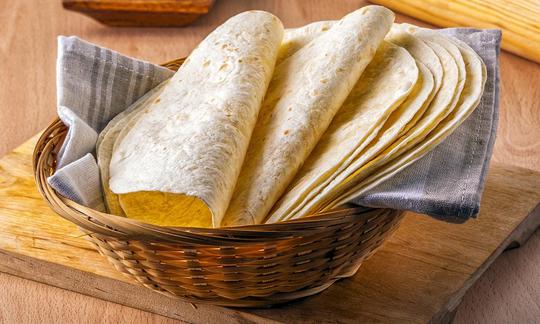

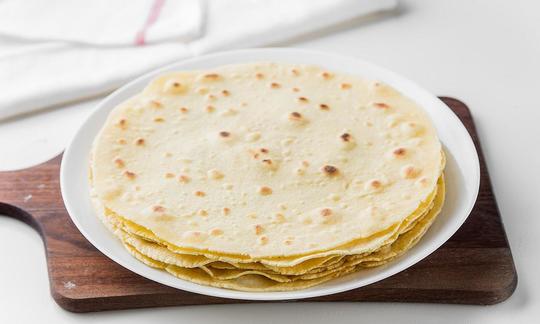

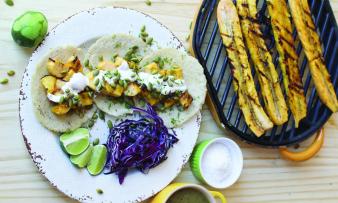
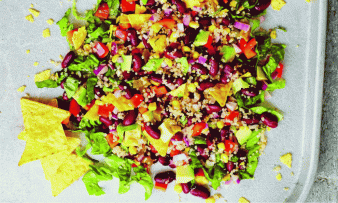

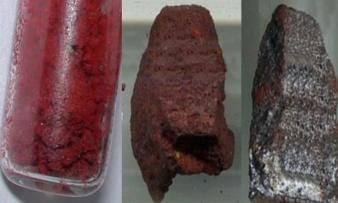
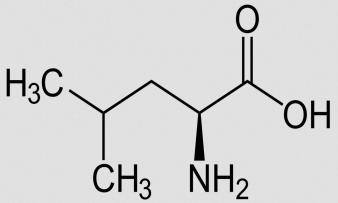


Comments